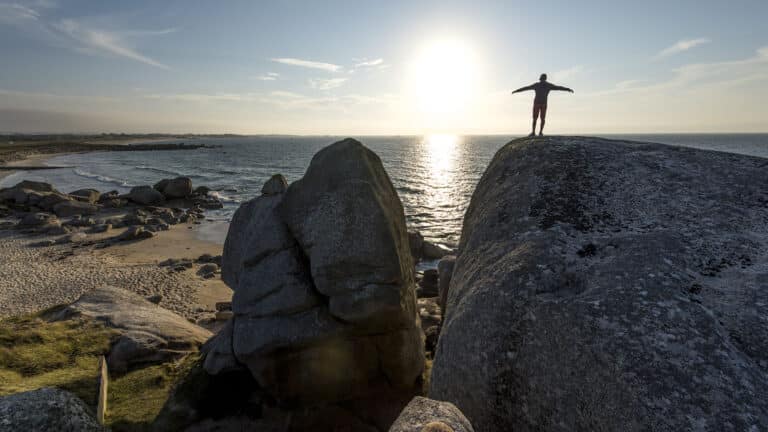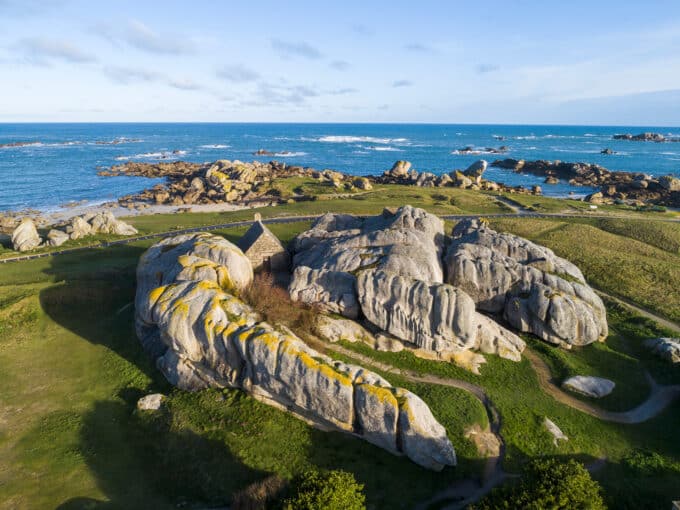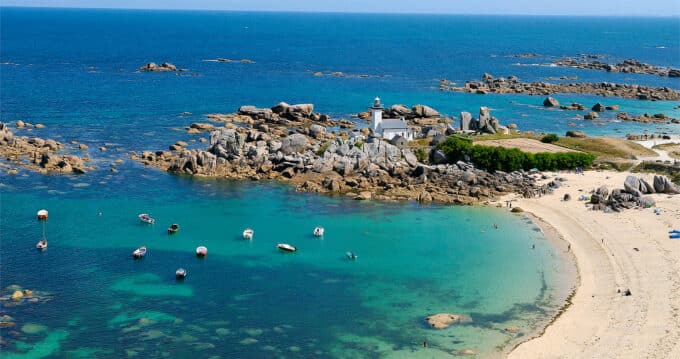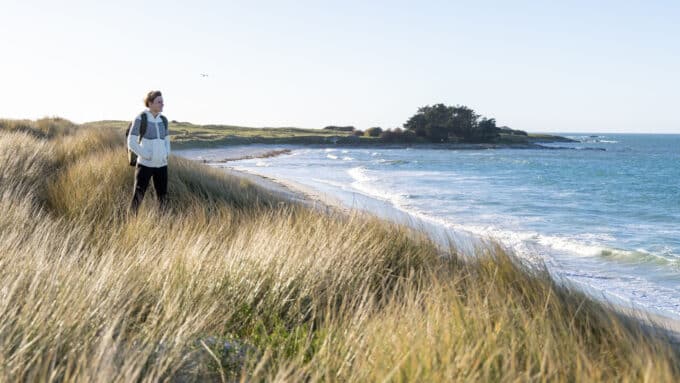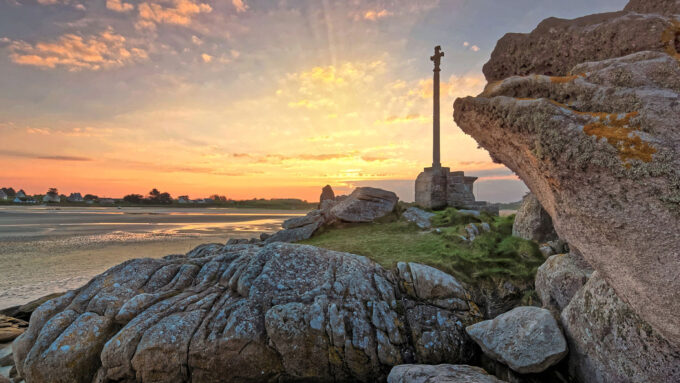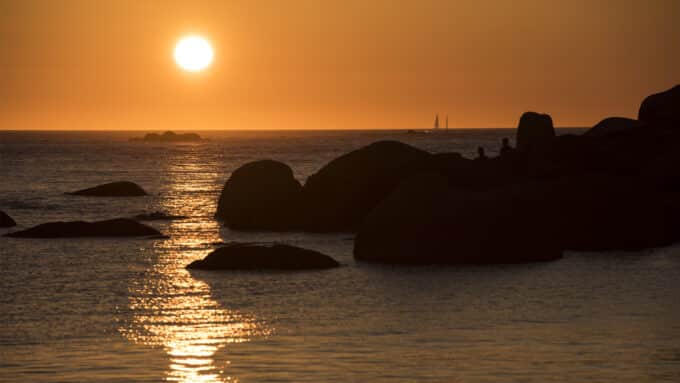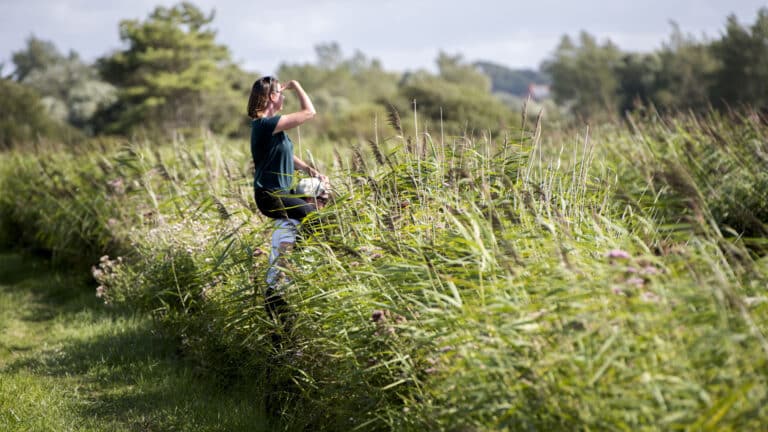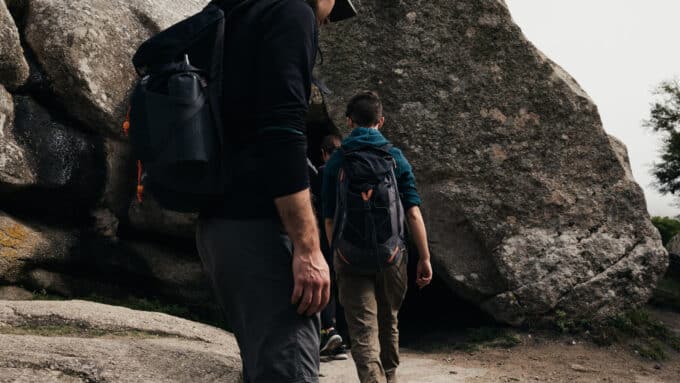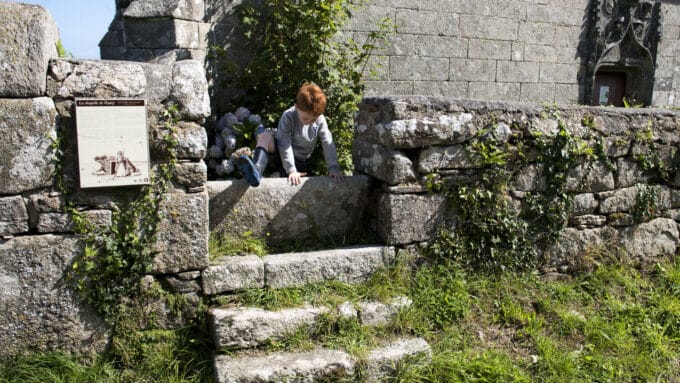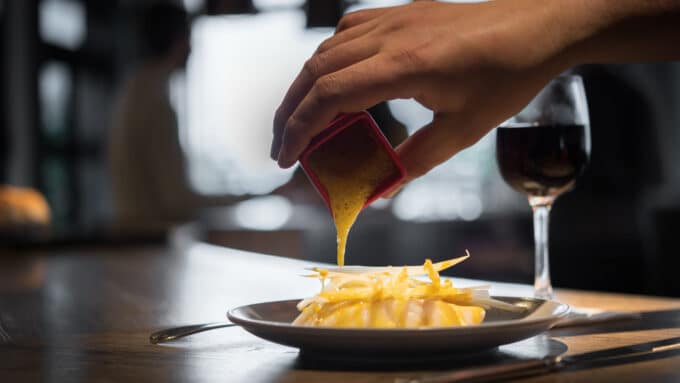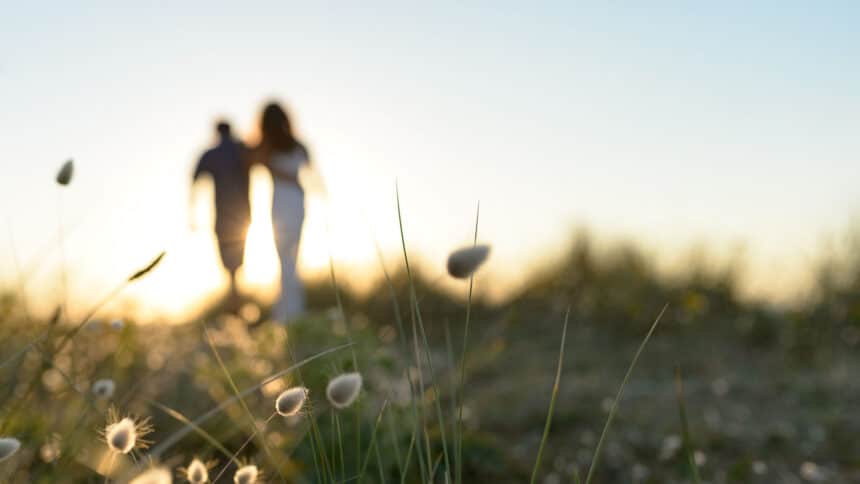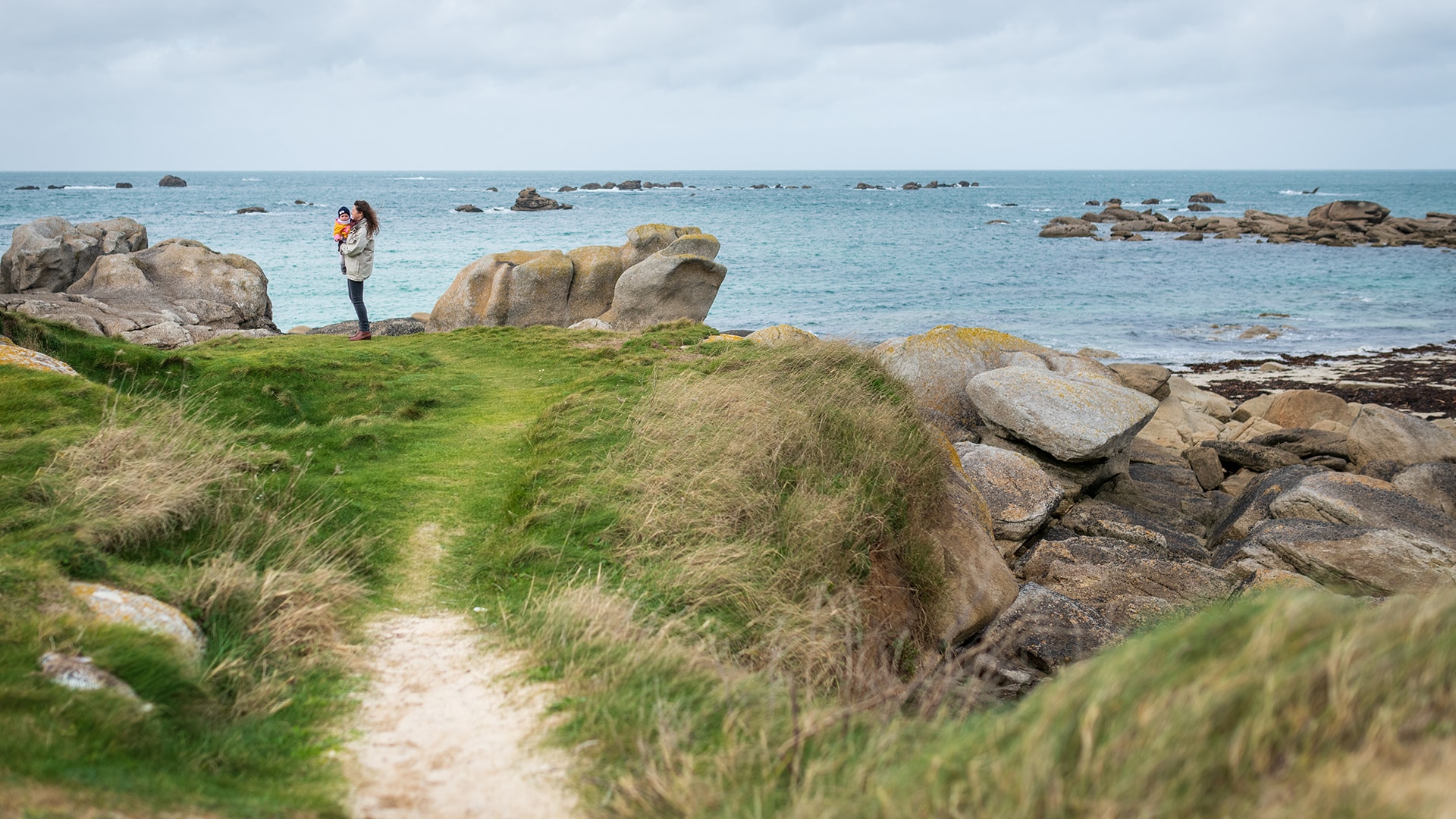Winter on the Côte des Légendes - a gentle, subtle blend
In February and March 2019, Tourisme Côte des Légendes commissioned photographer Emmanuel Berthier to produce a simple, honest photo report showing the Côte des Légendes during this period, little-known by tourists but appreciated by locals.
We asked him to look back at this report to find out what touched him about the Côte des Légendes in winter, and to tell us the stories behind six photographs he selected!
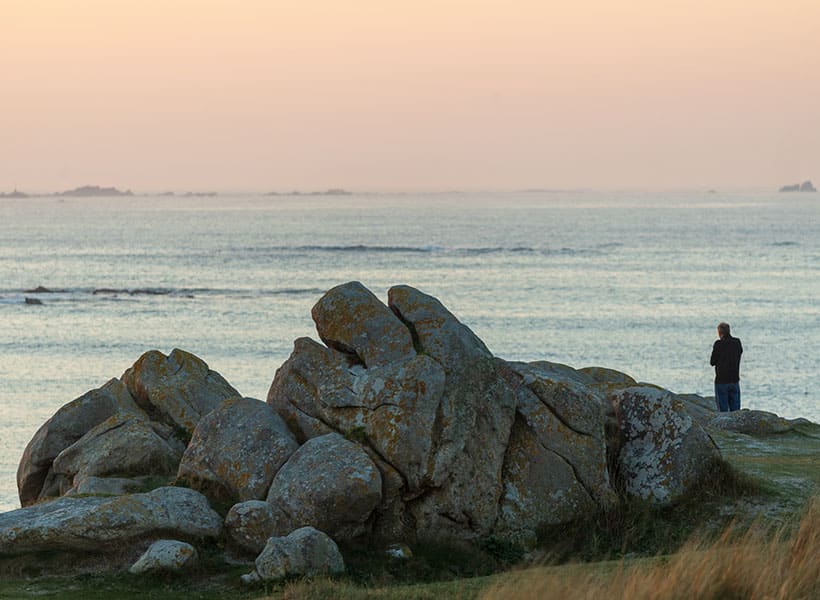
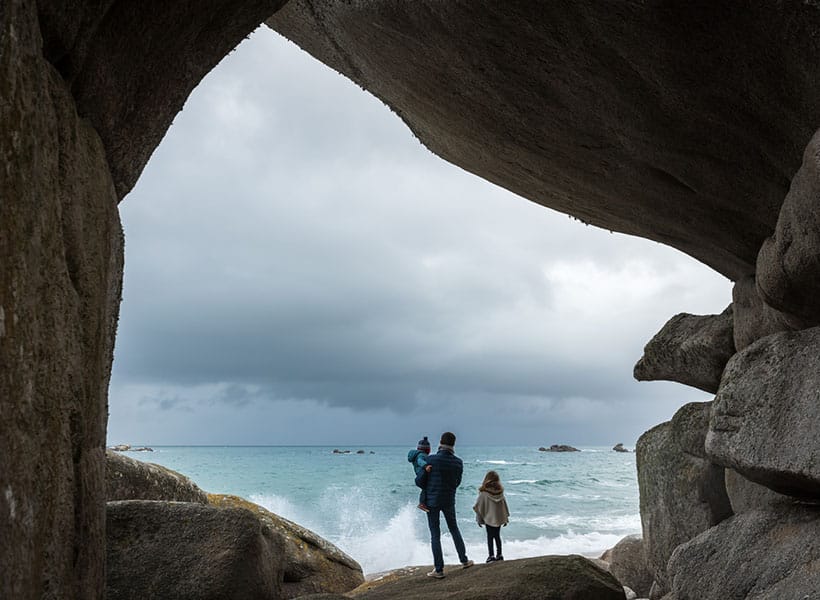
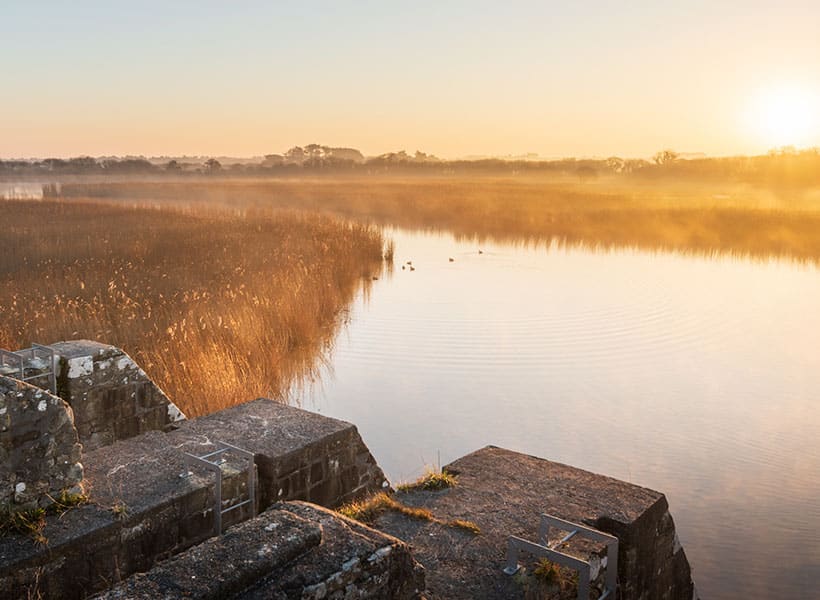
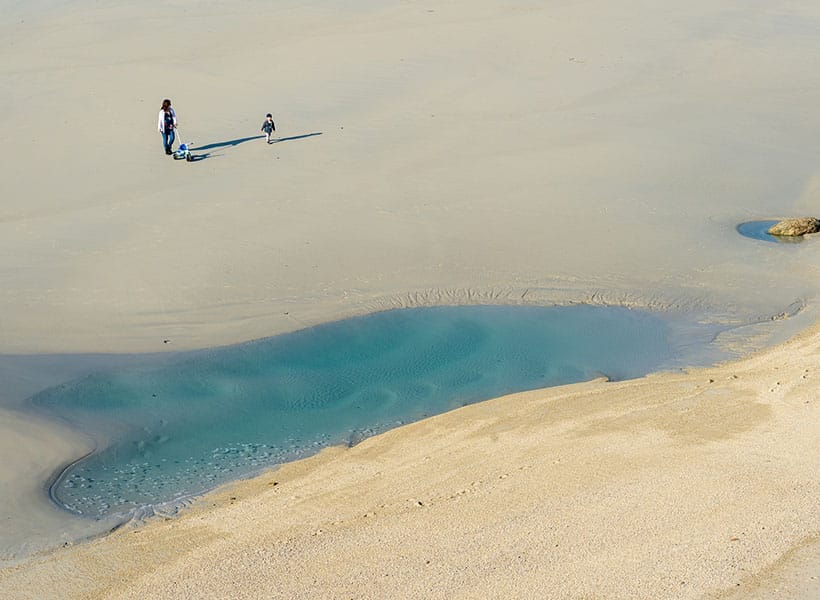
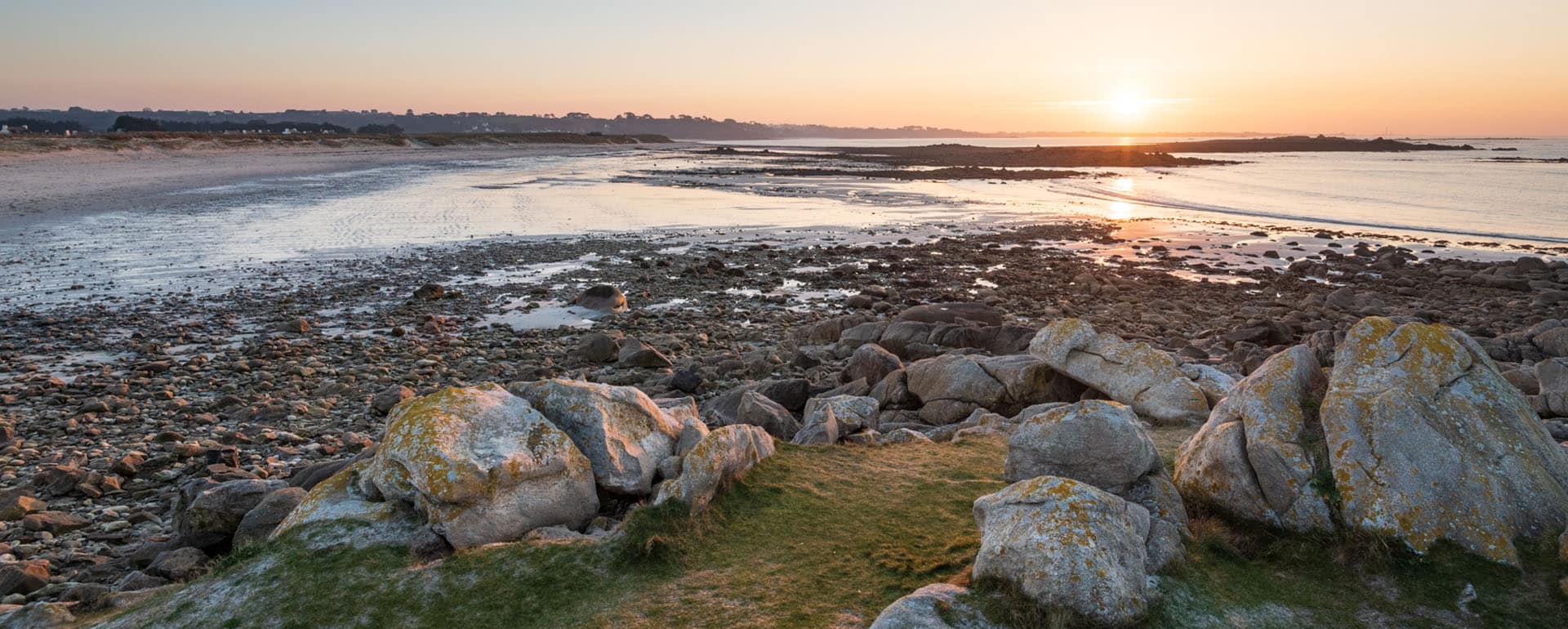
Our interview
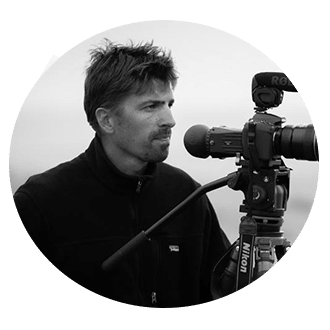
A naturalist by training, with a BTS in Management and Protection of the Natural Environment, photography came gradually to him during his studies. Caught by the "photo bug", which became as much a passion as nature, he mixed the two in his profession, starting out as a wildlife photographer, then expanding into tourism and landscapes. He has been a full-time professional photographer for 10 years.
"Nature is a childhood passion. I live in the country, I've always been outdoors and I couldn't see myself working in an office, I needed something outside!"
► Which area do you work in most often?
I work a lot in Brittany, I live in Morbihan. It used to be Finistère, Ille-et-Vilaine and Côtes-d'Armor... But I have a particular affection for the Côte des Légendes.
Otherwise outside Brittany, I travel for my job. I like cold regions, so I spend part of the year in Scandinavia. Then, from time to time, I take on other photo reportage assignments, depending on the client.
► Speaking of Scandinavian countries, do you find elements of them in Côte des Légendes?
Yes, there's the atmosphere I like in Scandinavian countries. They have wide open spaces where you can really breathe. There aren't many of them in these immense countries, which are made up of lakes and fairly peaceful coastlines, where nature has its place. It's on these points that I find links with the Côte des Légendes. When I arrive here, I can breathe. There's no traffic jam, just this horizon with its superb beaches and this feeling of freedom.
For me, there are two important things: a climate that's not necessarily easy and a gentle way of life. In Scandinavian countries, people don't really pay attention to the weather. They go outside because they love to go outside. There's a Norwegian proverb that says: "There's no such thing as bad weather, only bad clothes". And this saying can be applied to the Côte des Légendes! Even when it's stormy, even when it's grey or when it's very hot in summer... you just have to dress for the weather, and then you can really enjoy the outdoors. You can see the kids playing on the wet beach in winter, and that's no problem at all! On the Côte des Légendes there's a whole outdoor life, there's the little fishing grandpas... People enjoy being outside whatever the weather.
► In terms of the photos you've selected, can you tell us a little more about them?
So, I like to get a feel for the general atmosphere. As there are fewer colors, I try to make photos that are legible, that give off a pretty strong idea, but still remain natural. I retouch my images very little. I develop them because they're taken in .raw format, to be technical, so they need to be developed to conform to reality. The few effects, for example on the photo of the blue lighthouse with the sea a little blurred, are done at the time of shooting. The camera takes a long pause to record the movement of the waves, not in post-production.
► What type of camera did you use for this story?
Like many professionals, I work with SLRs. I use the Nikon brand. Lens-wise, wide angle, it's from 14 mm to 500 mm, to be precise.
► What do you remember about this report?
It was a pleasure to do it! Winter is a less busy time for photography because there are inevitably fewer requests, so you take your time more. You have time to hang around, soak up the atmosphere and let the encounters happen. We're getting away from the automatisms of summer, which we try to avoid as much as possible.
Light is the hallmark of winter; it's rarer than in summer, which makes it more precious. It's also more changeable.
We quickly return to the etymology of the word photography, photo - light, graphie - to write, " to write with light ".
Its must-see spots!
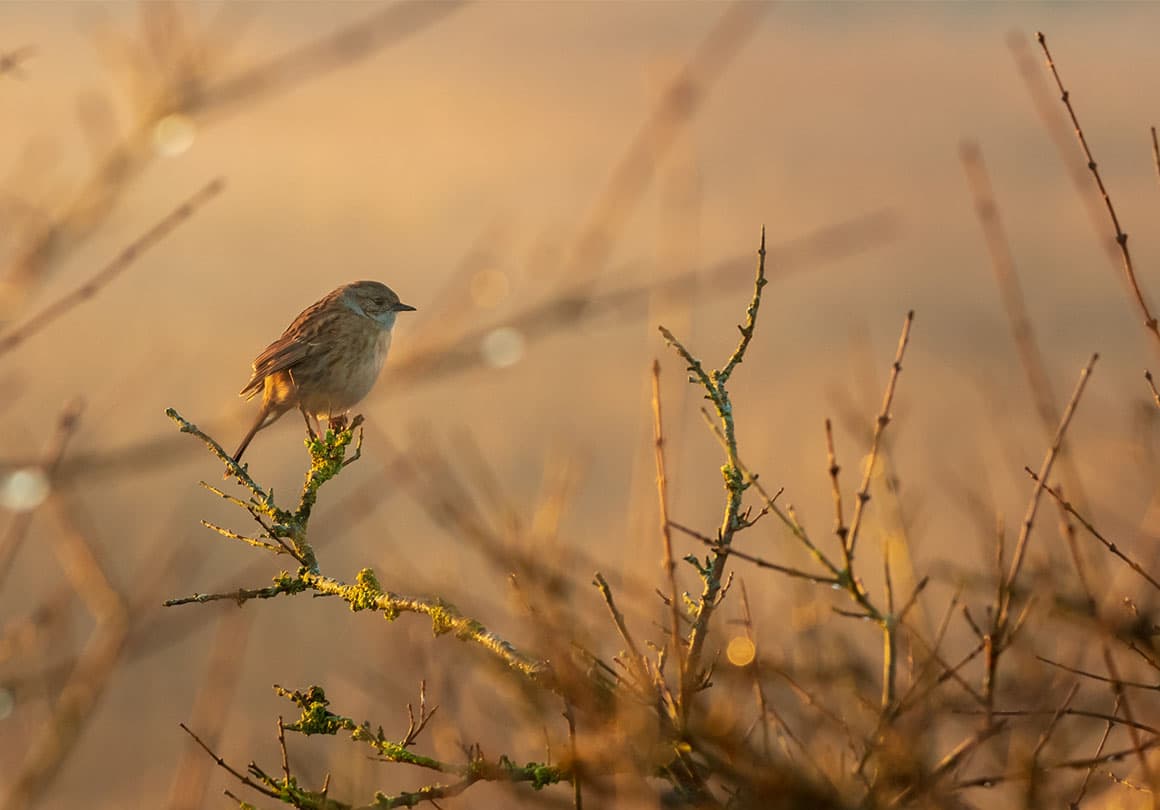
Goulven Bay
"I've rediscovered Goulven Bay. I knew it more for ornithology, going bird-watching with friends. It's a great place to observe! And it's a natural site that you have to respect - not make too much noise, be discreet. These are essential phases for the birds, because each time they take off, they expend energy, so the less you make them take off, the more likely they are to survive and make the migration back.
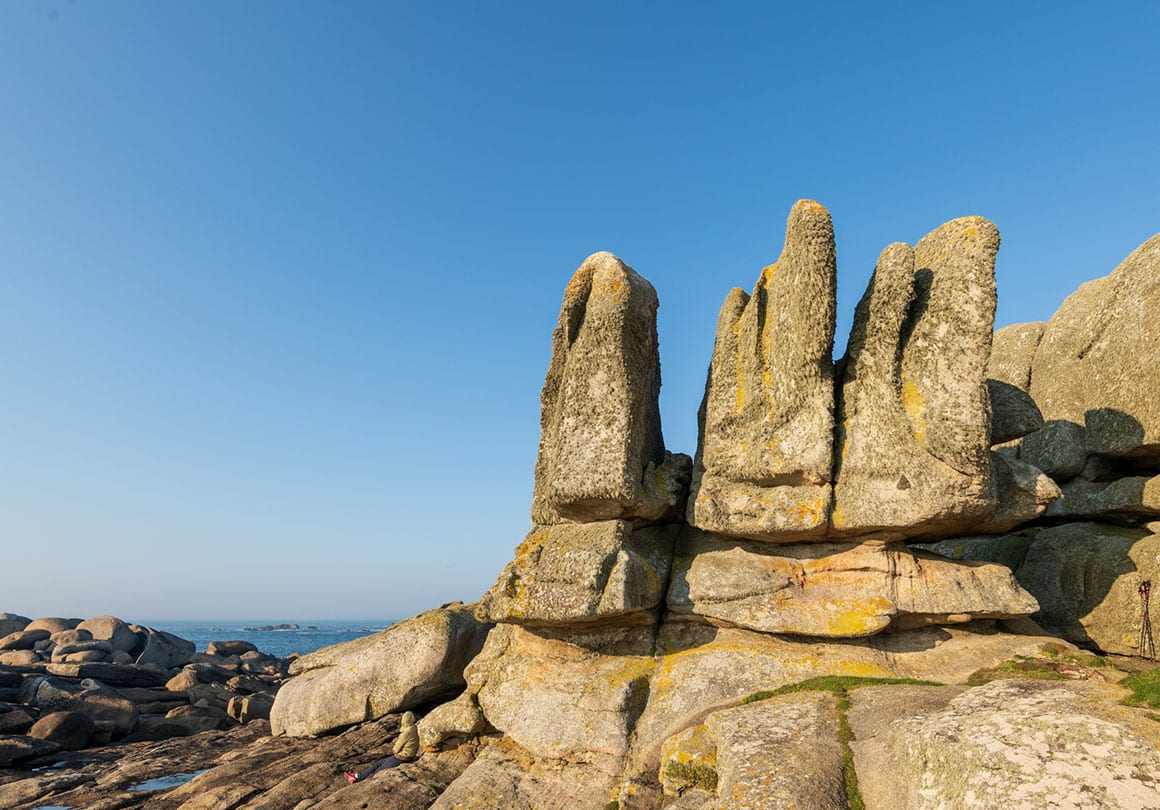
The Kerlouan coast
"The coast from Kerlouan to Plounéour-Brignogan-Plages, with the Pontusval lighthouse, of course, but also the photo with the walker, is well after Kerlouan, between Kerlouan and Guissény. The coastline is magical, with its peculiarly shaped rocks. Don't hesitate to climb them to get a better view. You can start with the big spots like Pontusval and Meneham, but the whole coastline is rich in opportunities. If you go along the coast, you'll discover many treasures.
6 photos → 6 stories!
Pontusval lighthouse
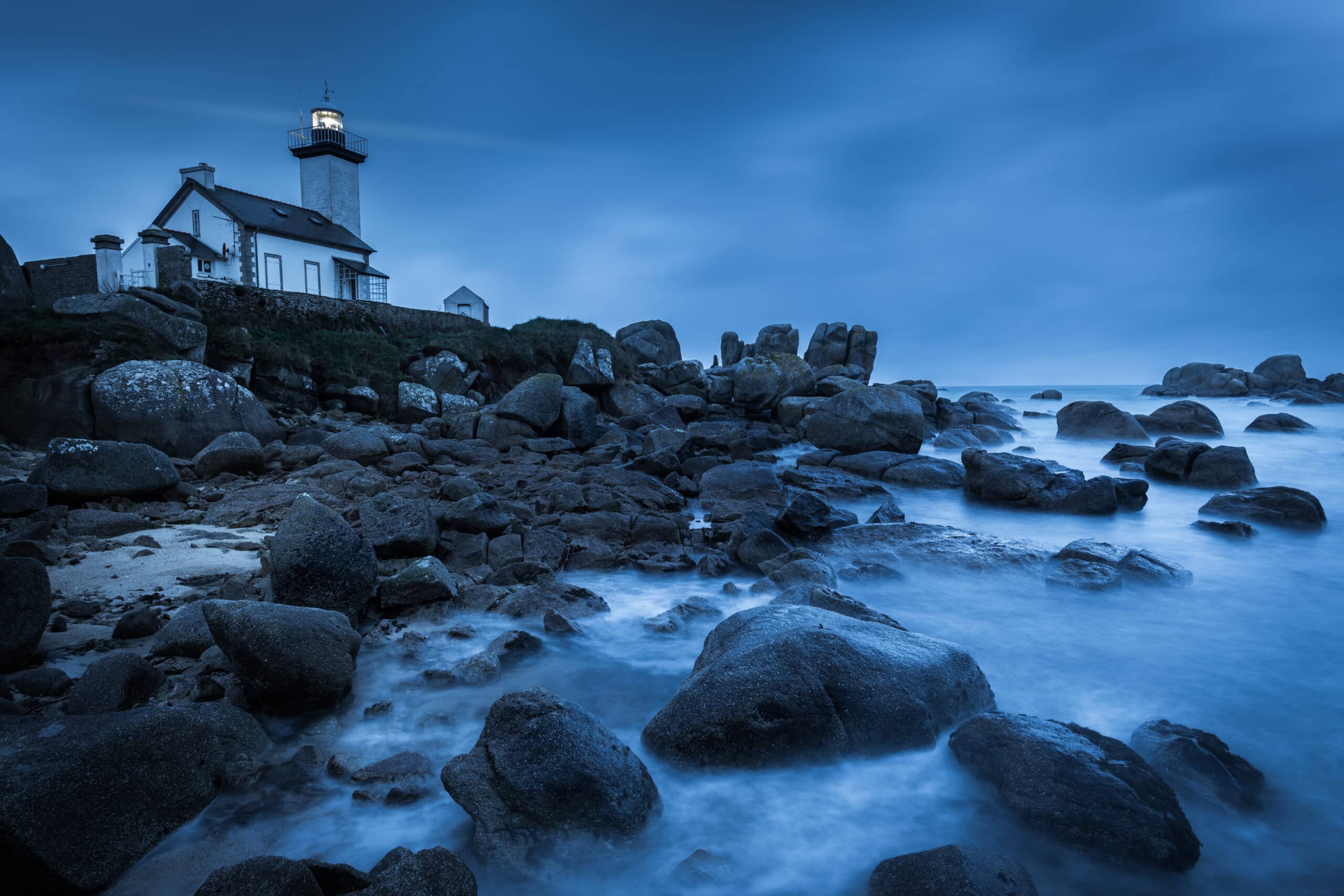
► What's the backstage of this photo?
On a technical level, I took a long pause, it's an effect. When it's dark, you can't freeze the movement of the waves and you're obliged to leave the shutter open for a long time so that the light impresses the sensor or the film, now it's a digital sensor. For this one, the pause time is 13 seconds. During 13 seconds, the camera will record all movements, so clouds and waves are a little blurred, but what doesn't move remains sharp. The result is a wispy look that suits the Côte des Légendes. A little mystical.
One of the particularities of winter compared to other seasons is that the sun sets early and rises late. Night is a big part of the day, so I thought it was important to show that. This bluish atmosphere at the beginning and end of the day. This one was taken in the morning, in March, not very early, around 7:30 a.m.
For the beam, I increased its contrast. It's the only modification I made to this image, otherwise it wouldn't be visible, drowned out by the movement.
► It makes for quite an interesting palette.
Yes, these are the winter colors. In the morning, the landscape changes very quickly. A few minutes later, the lighthouse has gone out and the mood has turned to gray.
What's fabulous are these round rocks with their improbable shapes. For a photographer, they're a joy to compose! They give texture to the sea. What's more, it's hellish, you spend a lot of time composing the image the way you want it, because as soon as you change the angle, it changes everything!
On this particular photo, I thought of it following a discussion in which it was said that you always saw the other side of the lighthouse, the beach side, and never this one. So I went there to see what could be done, and it turned out to be quite an unusual view.
► Is this a photo spot you enjoy?
Yes very much, it's a postcard! It's an image that many people have of Brittany. But sometimes you can be disappointed with certain postcards, because the photographer has taken a particular angle, then perhaps retouched the photo... For the Pontusval lighthouse you're never disappointed, everything is perfectly arranged, for a photographer it's perfect!
When you're by the sea, what's complicated is having high points that furnish a little, because there's the horizon, the sky and a large surface, which is often sand. As soon as you can get a little relief and a lighthouse... Especially a lighthouse, it's quite symbolic! It's interesting, and then there are the rocks in the sea to occupy and enrich the image.
A family in Kerlouan
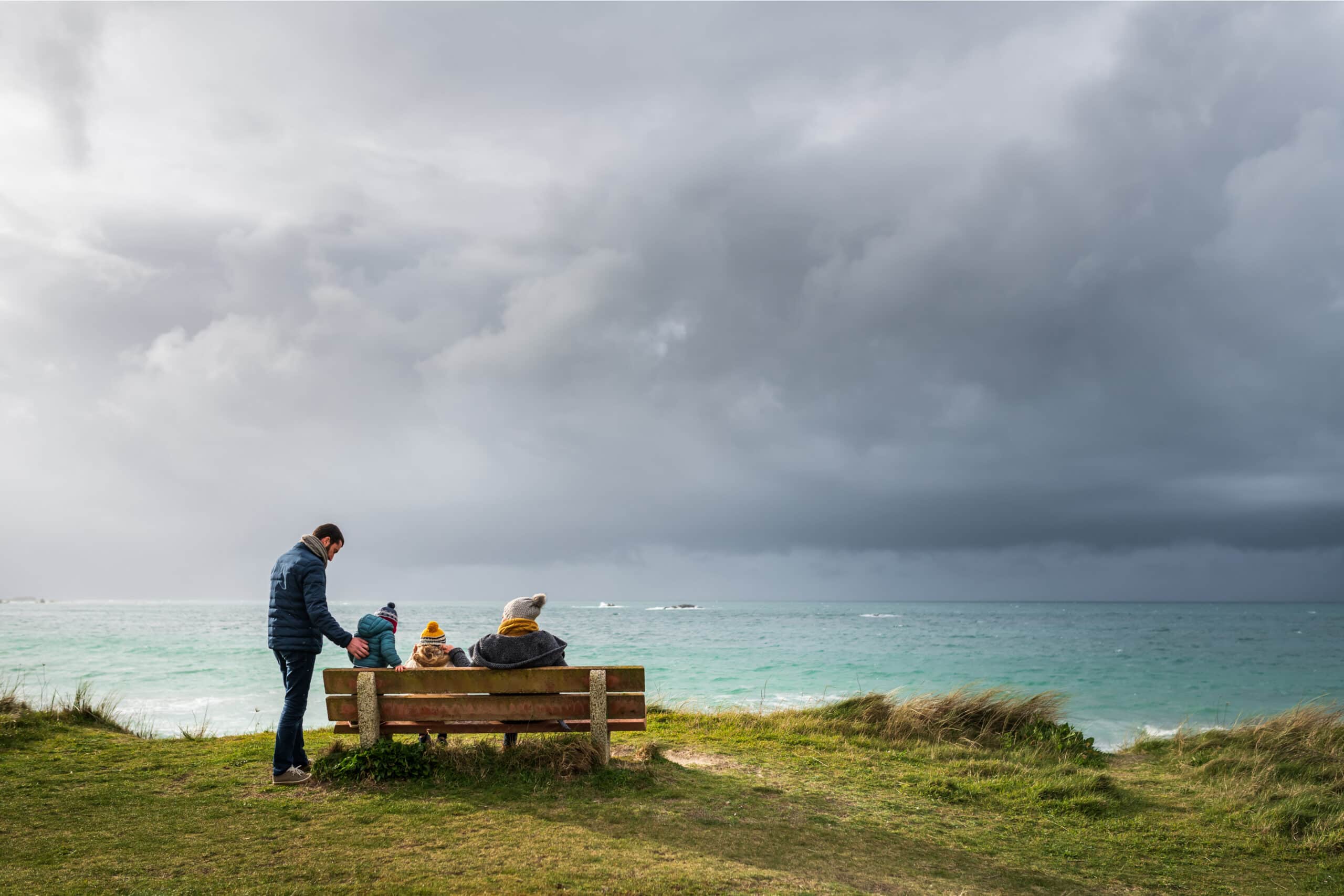
► Why did you select this photo with a family looking out to sea, and this rather menacing sky?
I could have made it more menacing! It's easy in photography to capture a terrible sky and retouch it to make it look perfect. In this case, I wanted something quite realistic and subtle, so the sky was really like that!
It's quite a frontal shot. It has fewer perspectives if you compare it to other images. It's composed like a painting. It's really "flat". I like this pictorial aspect.
Clearly it could have been a photo taken on the Swedish coast or in Denmark. You can feel the Breton character in it, but there's also the light typical of northern countries. There are no effects, as few as possible. It's just about showing reality and a family atmosphere that, as a Breton, we know well in winter. That means dressing up warmly and going to the seaside on weekends, come rain or shine. In this case, you can see a squall on its way out, with a clearing coming in, and then, half an hour later, another squall is sure to arrive!
The day is punctuated by this play of light, these changing colors. You can go out every day, but you'll never make the same images!
► Did you give the extras any advice on what to wear?
I advised them to dress warmly. First of all, so as not to be cold! And with as few plastic materials as possible. Natural materials go better with the location. They played along by wearing wool. After that, you can't plan for everything, and you have to leave things to chance, especially when it comes to choosing colors.
► There's also a photo of these people in the rain, was that before or after?
It was right after, we had a huge squall!
► Do you protect your camera in the rain?
No, I use Nikon D5 and D850 pro cameras. They're tropicalized and don't mind the Breton winter either. There are rubber gaskets all over the camera to allow it to be used in the rain.
► Is taking pictures in the rain something you like to do?
In the rain, it's not easy, because for the rain to be visible you'd need big rainstorms. But they're still interesting photos, because they're unusual and rare.
It's an area worth exploring, because there's always room for creativity. It's an important part of the year, not just for Bretons, but for everyone! We all have rain on a regular basis, so why not show that off, after all?
After that, it's not easy to take a good photo. It's easy to lose visibility. It's a challenge. You have to do a lot of tests and think about the photo before going for it. I don't do it often enough, and I was delighted to be able to do it as part of a commission.
► Are you getting more and more requests like this?
More and more. Taking nature as it is and not necessarily going when there's a big blue sky and 25°. We all enjoy being outdoors, even when the weather's bad or just grey and mild.
It's true that until now, we didn't show that. We either had storms with huge waves or very fine weather, but between the two, there's a palette of light and moods that are quite undocumented and yet very interesting! Of course, it's harder than when there are spectacular things to photograph. That's where you have to look for more subtle atmospheres.
Jumping for joy in Meneham
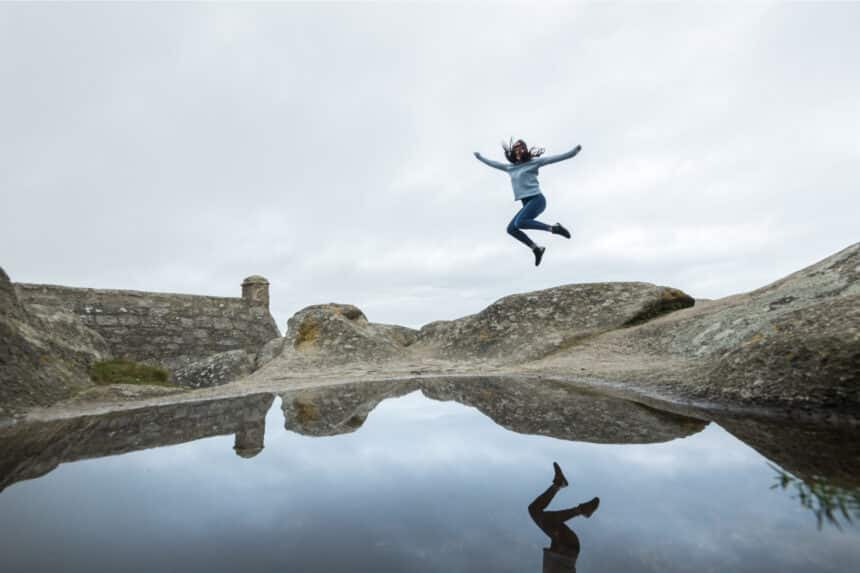
► A different atmosphere with this jump of joy in Meneham!
Yes, this is a different kind of winter weather: low, uniform and gray, but not necessarily very cold. There was no wind that day, as you can see from the reflection of the puddle. It's a timeless atmosphere that we're all familiar with. It's easy to wander around in this typically Breton weather.
The place is a signature, with its stone roof emerging and blending into the rocks. But you can clearly see that it's a man-made form. That's why, to liven up the photo, I asked the figure to jump up and show her enthusiasm for being there! She was discovering the Meneham site.
► She didn't know the place?
Not at all! I love working with people who don't know the places I'm going to photograph them in. You can capture the "freshness of discovery". You can see it on her face, that she thought it was beautiful and that she was happy to discover this site. She's Breton, from Ploërmel in northern Morbihan. My job is to capture this freshness, this spontaneity, and encourage her to express it by asking her to jump, for example. After that, I didn't tell her anything about the jumping position, she did it herself.
► It takes confidence in the location to know that it will be possible to capture the discovery!
No problem! 100% sure.
► The Meneham site, summer or winter?
It's hard to answer that!
Right now, I'm in Vannes and it's raining. I'm thinking "cool, autumn is coming". If autumn lasted 10 months, I wouldn't like it! It's so magical when the weather's fine and the water's blue-green, and in winter it's so atmospheric. I love the alternating light, which means I never get bored there.
Some types of weather are better suited to certain types of photography. Gray weather like this is ideal for portraits. Winter provides softer light that doesn't accentuate contrasts and facial features. And when you're in this atmosphere, where it's quite calm and peaceful, where you feel good, it shows on the features of the face.
That day, there weren't many of us, so the site was for us. There aren't many places like this in Brittany where there's a beautiful, peaceful site. Unlike sites like Pointe du Raz, Crozon or Quiberon. These are sites that are victims of their own success, because they're so crowded. For a photographer who wants to refine his photos, it's more pleasant to report on less-frequented sites, but which are strong in photos. There are other places on the coast where there aren't many people, but which aren't of crazy photographic interest.
Goulven Bay
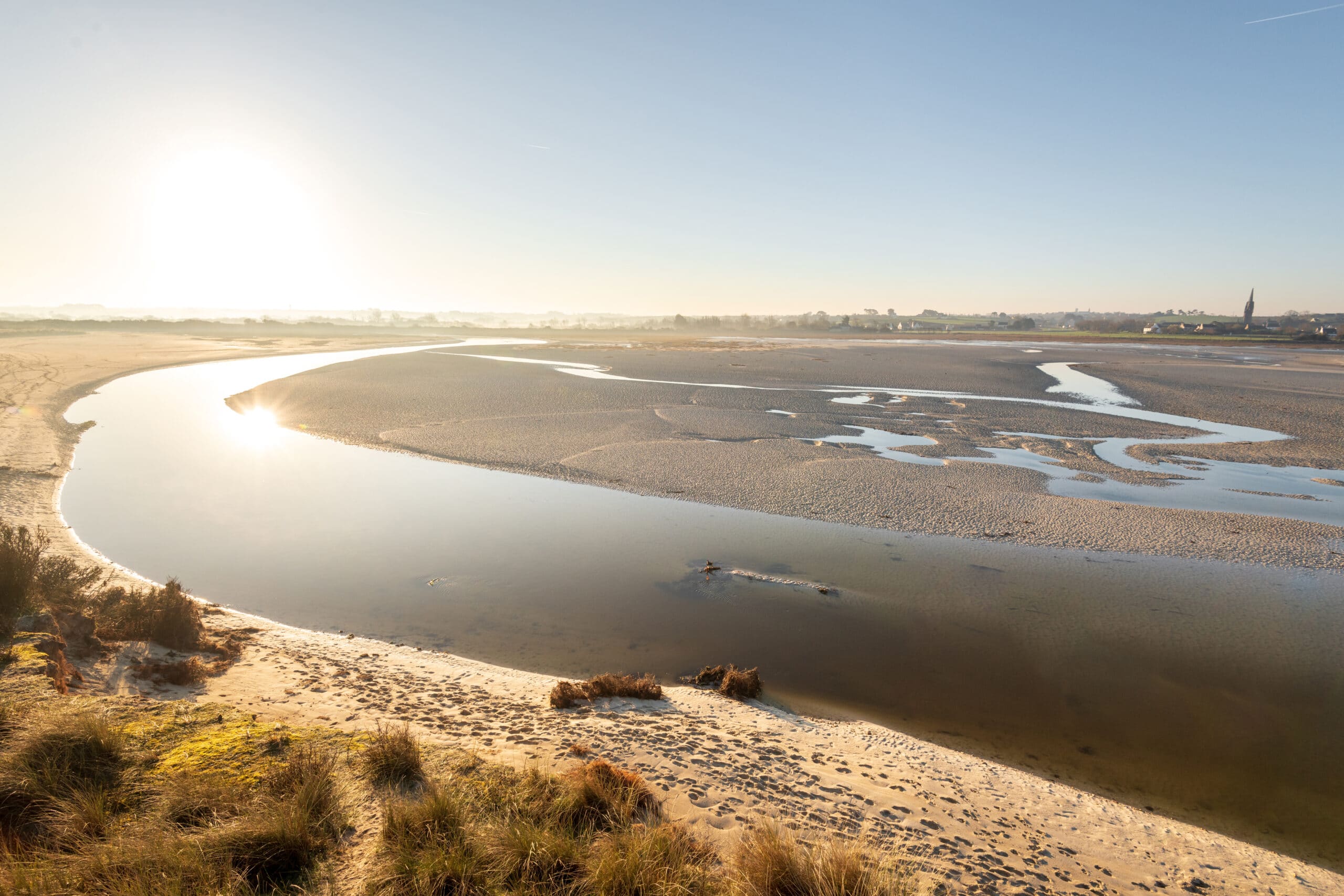
► Fourth photo in your selection, we're on Goulven Bay at low tide.
In Goulven, yes, we're not far from Kerlouan, but it's very different in terms of atmosphere. We're on a large stretch of sand, so you can breathe deeply! It's a rather atypical landscape, with this great dune belt. There aren't many waves, as these estuaries are usually quite muddy, but here we've got superb white sand, with a lovely feeling of space and the passage of the birds that winter in the bay. It's a very beautiful site. It's been a long time since I've been there, and I went there just for this report and rediscovered it.
► You decided to take this photo at low tide, is it more early or late in the day?
I wanted a daybreak with a low tide precisely to get a good look at this meandering stretch of sand. You can see the water "drawing" its path across the sand.
A lot of photographers don't take pictures of low tides. But I find it quite interesting. Otherwise, here you have a large, uniform expanse of water where nothing much happens, or you need a boat... Whereas here, graphically, it's richer and you get more of an impression of space and perspective. You can really see and appreciate distances. And in terms of composition, it's a joy, because it creates threads that the eye follows. It starts on a diagonal and leads towards the sun, with a line to the right that takes us to the bell tower, making the place recognizable.
And always the fabulous color of the sand on this coast.
► Do you appreciate more the shots that require you to get up early?
Yes, the advantage of winter photography is that the sun shaves the horizon for longer, it doesn't rise as high, and the light is softer. A sunrise in summer takes 15 minutes, whereas in winter it takes three quarters of an hour to an hour. You have more time to take pictures and enjoy the atmosphere.
A winter beach in Kerlouan
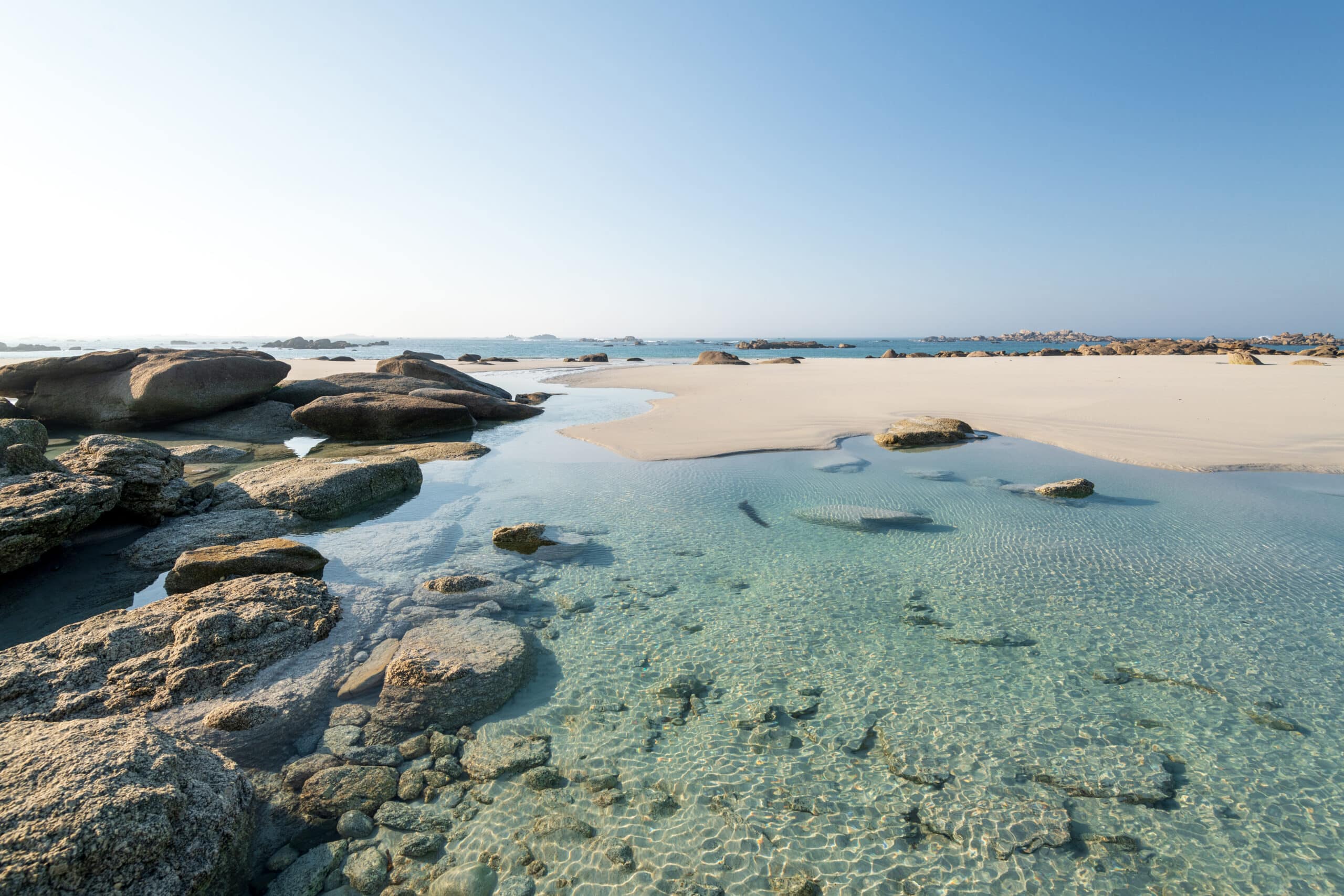
► You also selected this photo of Kerlouan beach, with a very blue sky!
It was the same day as Goulven's, in February. It was a bit of an accident in the middle of winter!
The temperature was pleasant, around 20°c. Just for the record, the photo would have been identical if it had been 10°C. But it just goes to show that winter doesn't have to be cloudy or stormy, it can also be sunny. And the winter sun always brings subtle colors. A softness emanates from the image.
► Have you tested the water?
Just with my hand to test the temperature! By the way, yes, people were swimming, and without wetsuits! People were arriving at the water's edge in bathrobes. I also wanted to show these images of the Breton winter.
The Kerlouan walker
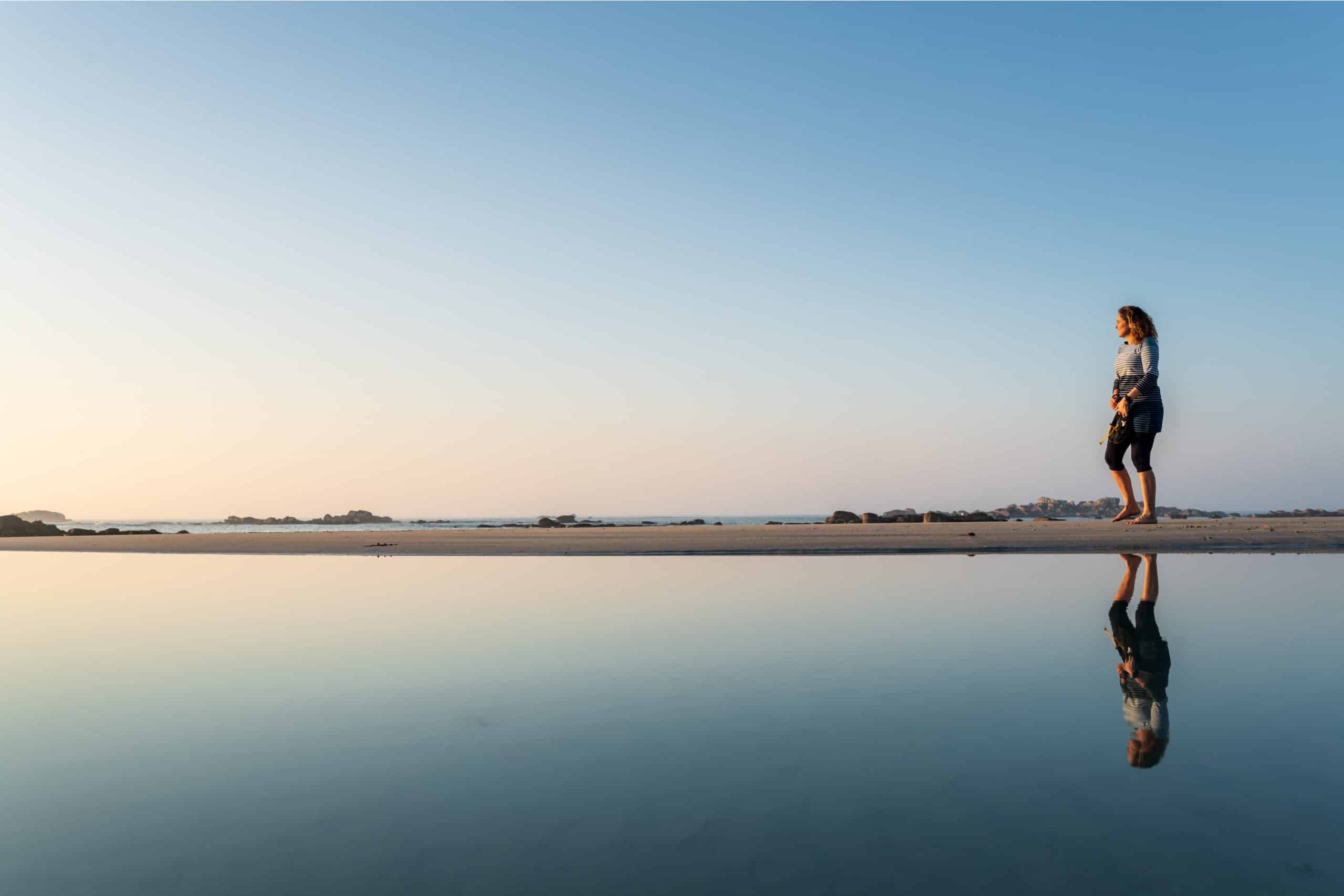
► Let's end this interview with this last image, how did you capture this moment?
This photo is somewhat related to the one of Kerlouan, notably with the same translucent water. It's also a beautiful winter's day, but with an early sunset atmosphere.
There's the softness and subtlety of the hues and the sun taking its time to set. Winter sunsets are a thousand times more beautiful than in summer, because the sun stays on the horizon much longer before dipping. There's plenty of time to appreciate these hues, which range from pink to blue to yellow.
There wasn't a wisp of wind that day, so we can get the perfect reflection of this walker, who wasn't an extra. Just someone who lives on the Côte des Légendes. She was taking a walk after her day's work, and really walking barefoot on a winter's day. I jumped at the chance, because photography is all about waiting for those little moments to happen. Here, there's a harmony between her outfit, her attitude and the weather.
I try to be as faithful as possible, and while it's true that we're talking about tourism photography, I try to show really beautiful moments. Photos are more valuable if they reflect things that exist, without staging. A person on vacation can experience the same thing.
As for colors, we often see photos where saturation is pushed to the limit, requiring two clicks. I've always tried to achieve a natural look in my images.
